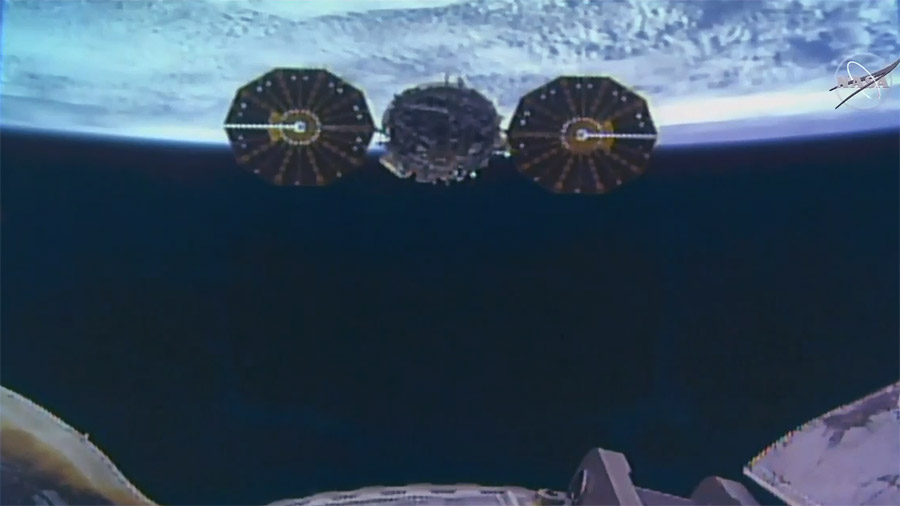
Robotics controllers are preparing a new commercial crew docking port for installation during a spacewalk on Wednesday. Meanwhile, the Expedition 60 crew is researching life science and physics while packing a cargo ship for return to Earth next week.
The Canadarm2 robotic arm will extract the International Docking Adapter-3 (IDA-3) from the trunk of the Space Dragon cargo craft during the crew’s sleep shift tonight. Ground controllers will remotely position the IDA-3 on top of the Harmony module where it will soon become a permanent part of the orbiting lab.
Spacewalkers Nick Hague and Andrew Morgan will exit the station Wednesday about 8:20 a.m. EDT to finish the IDA-3 installation job. The duo will work outside Harmony for about six and a half hours routing cables and configuring the IDA-3 in preparation for the arrival of future SpaceX and Boeing crew vehicles. See an animation of their planned activities.
Hague had time on Monday afternoon to research ways to improve tire manufacturing and performance on Earth. Morgan and NASA astronaut Christina Koch were packing Dragon and readying the space freighter for its return to Earth on Aug. 27.
Flight Engineer Luca Parmitano of ESA (European Space Agency) spent the day on a variety of life science studies. He first collected his blood and urine samples for analysis, and then he tested his blood sugar for the Vascular Aging study observing cardiovascular health and insulin resistance in space. Finally, he spun cell culture samples in a centrifuge for the Micro-15 study investigating cell differentiation.
The two cosmonauts, Alexey Ovchinin and Alexander Skvortsov, kept up the Russian segment of the orbiting lab today. Commander Ovchinin checked out a treadmill in the Zvezda service module before gathering items for return to Earth on a Soyuz spaceship. Flight Engineer Skvortsov is recording his heart activity for the next 24 hours while also maintaining Russian life support hardware.
Russia’s Soyuz MS-14 crew ship has rolled out to its launch pad at the Baikonur Cosmodrome in Kazakhstan today. It will launch Wednesday with no crew onboard at 11:38 p.m. EDT to test its 2.1a booster segment during ascent. The unpiloted Soyuz spacecraft will automatically dock Saturday at 1:30 a.m. to the station’s Poisk module.









